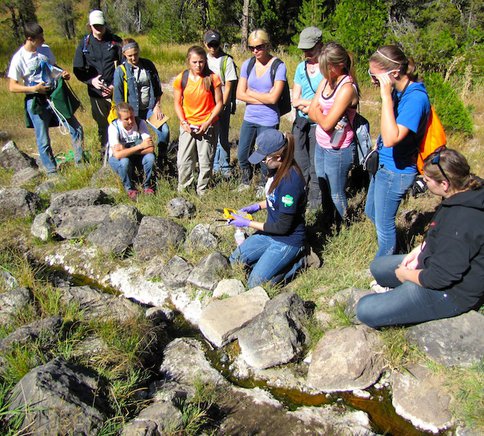2013 Annual Science Report
 NASA Ames Research Center
Reporting | SEP 2012 – AUG 2013
NASA Ames Research Center
Reporting | SEP 2012 – AUG 2013
EPO Activity: Astrobiology Student Intern Program at Lassen Volcanic National Park
Project Progress
The Ames Team of the NASA Astrobiology Institute collaborated with Lassen Volcanic National Park and Red Bluff High School to create the Lassen Astrobiology Intern Program. This program engages high school students to collect and disseminate new scientific data for NASA astrobiologists, the National Park Service and university researchers. From the start of the intern program in Pilot Year 1, 2008, to the continuation of Year 4 in 2012-2013, 40 high school juniors and seniors from Red Bluff, CA have participated in the Astrobiology Student Intern Program at Lassen Volcanic National Park. The Ames Team, Lassen rangers and Red Bluff science teachers have trained the students in field research and sample collection techniques.
Lassen is a valuable resource to NASA because of its parallels with volcanism and hydrothermal activity on Mars. This volcanic park provides access to many extreme environments that host microbial communities. The hydrothermal features at Lassen are key research targets for NASA’s astrobiology program.
The continued theme for the 2012-2013 program is “Volcanoes, Water and Microbial Life in Lassen Volcanic National Park: Insights for Mars Exploration.” The interns focus on three distinct Lassen field sites with the goal of understanding how the rocks influence the water chemistry at each site, which in turn dictates which microbial populations are present. The student interns are divided into research groups according to the water chemistry at each group’s field site: (1) alkaline, (2) acidic and (3) neutral pH. The groups characterize how rocks are weathered or dissolved by meteoric input and by hydrothermal activity that ultimately releases chemical species into solution that the microbes can utilize.
